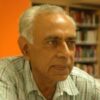The World — Real or Digital
TRANSCEND MEMBERS, 19 Dec 2022
Dr. Ravi P. Bhatia – TRANSCEND Media Service
The world around us that we can see or even unable to see is the real world. Here you may see a few people walking, working or eating together. As our individuality expands, the number of people walking or sharing some activity together is receding — becoming smaller. However, politicians when they make speeches are able to muster large number of followers — in fact the more number of followers, the larger is the strength of the politicians.
In the digital world we get interesting glimpses of different activities being performed. These may include women in sparkling dresses walking on the ramp; or children playing various games or just rapidly exiting from the classroom when the bell rings, so that no one may accuse them of not following the school protocol. In the real world, we may see one activity— either of listening to the school teacher in the classroom or playing different games — cricket or football or occasionally boxing in the parks.
Sensitive people are aware of these differences, but sometimes they cause mental rupture in deciding what is what and taking suitable steps to counteract wrong steps taken in life.
On another level, we hardly publicly see any romantic behaviour between men and women in reality but on the digital world women and men are often shown romancing and singing lilting songs. In fact some people are so much attracted to this romance and music that they switch on their TV sets or their computers for enjoying the romantic behaviour which hardly ever is observed in public.
One area which the visual media stresses is the stone throwing on buildings, or the collapse of some bridges or buildings resulting in large number of casualties etc. Mountaineering tragedies occur despite steps taken to avert them. Some people decry the details shown on the media. But a reverse justification given is that these sordid details will help in determining the causes behind mishaps and in reducing if not eliminating these tragedies.
An area that is shown effectively on the digital media is the history of a country. It informs about important kings or ministers of the past, their contribution in ruling their respective regions, constructing forts or temples or mosques and their interaction with neighbouring counterparts.
We are also often shown the dress that the kings wear and the armaments like swords or canons that are used in warfare. Sometimes we learn much more from the digital media about these historical personalities than information available in books or journals.
The information provided on TV is interesting and topical. Sometimes two or three scholars are invited to discuss about a historical period which provides the viewers of the programs with important and up to date information of the period. The scholars occasionally show original manuscripts from which they have collected relevant aspects of the subject on which discussions are taking place.
There are also beautiful soulful film songs shown on the TV. The music is pleasant and the words of the song are often powerful and relevant. These words often depict aspects of life — both joyful and painful. Often, the directors of the film in which these songs are sung, are expressing their personal sorrows or joys through these songs. A unique aspect of the songs is the few persons who sing them so beautifully — Lata Mangeshkar who sang hundreds of songs in various Indian languages, but mostly in Hindi, and who died recently, her sister Asha; Mohammad Rafi, Mukesh and Kishore Kumar who sang for male actors and made these songs lyrical and popular.
We have tried to depict reality as well as the forms this takes in the visual media. Both are true although sometimes exaggerated to stress particular aspects of life. Often, the means used is the ordinary Mobile phone. It is often amusing to see students and even labourers deeply immersed in their mobile phones.
Sometimes farmers are provided relevant information about farming through these gadgets. Life has moved far ahead from the time when little information was available about many aspects of life or of people working in factories or farms or even offices in urban centres.
Let us welcome the technological inputs now available to help us decide what to do and how to do.
______________________________________________
 Dr Ravi P Bhatia is a member of the TRANSCEND Network for Peace Development Environment, an educationist, Gandhian scholar and peace researcher. Retired professor, Delhi University. His new book, A Garland of Ideas—Gandhian, Religious, Educational, Environmental was published recently in Delhi. ravipbhatia@gmail.com
Dr Ravi P Bhatia is a member of the TRANSCEND Network for Peace Development Environment, an educationist, Gandhian scholar and peace researcher. Retired professor, Delhi University. His new book, A Garland of Ideas—Gandhian, Religious, Educational, Environmental was published recently in Delhi. ravipbhatia@gmail.com
Tags: Reality, Virtual reality
This article originally appeared on Transcend Media Service (TMS) on 19 Dec 2022.
Anticopyright: Editorials and articles originated on TMS may be freely reprinted, disseminated, translated and used as background material, provided an acknowledgement and link to the source, TMS: The World — Real or Digital, is included. Thank you.
If you enjoyed this article, please donate to TMS to join the growing list of TMS Supporters.

This work is licensed under a CC BY-NC 4.0 License.